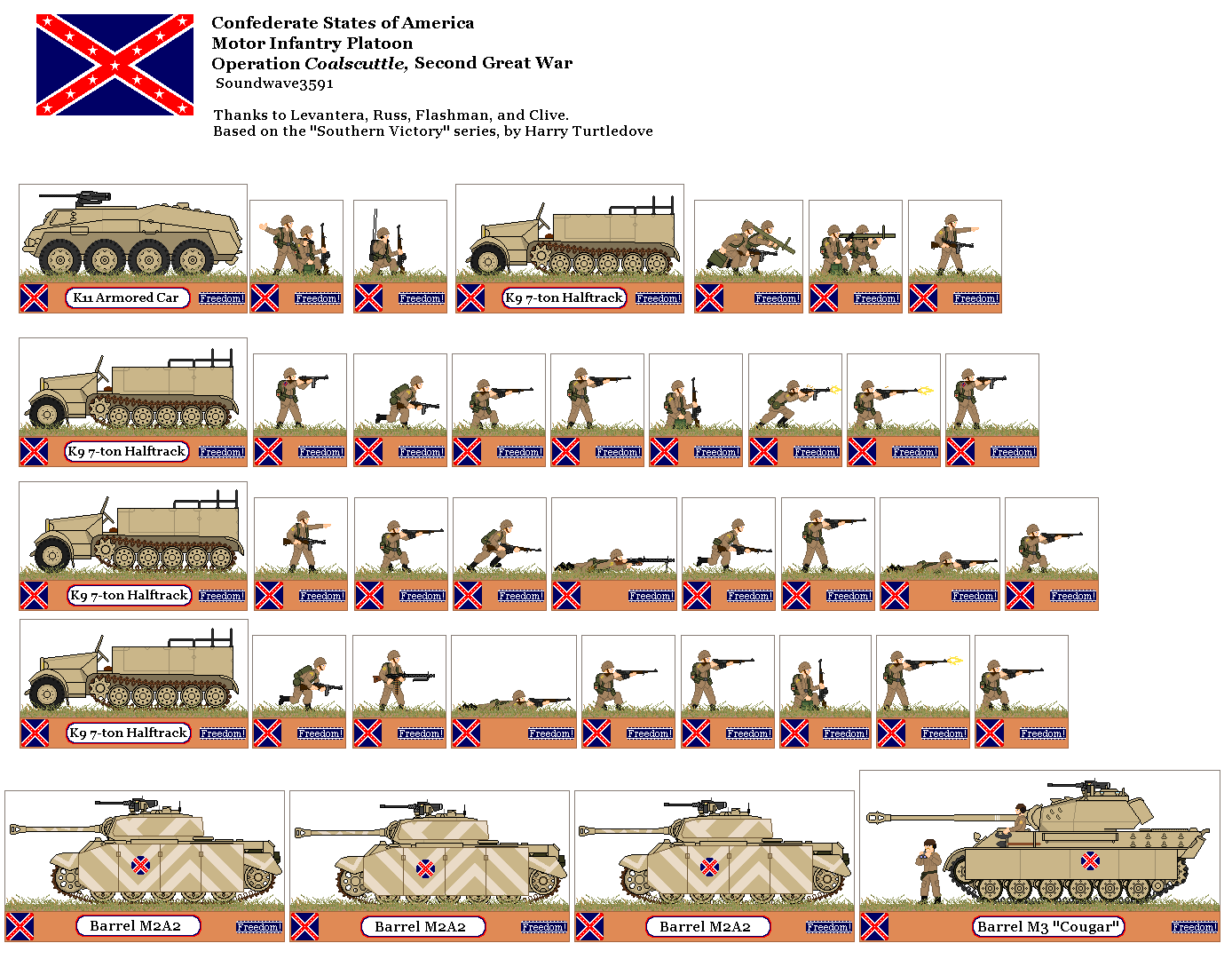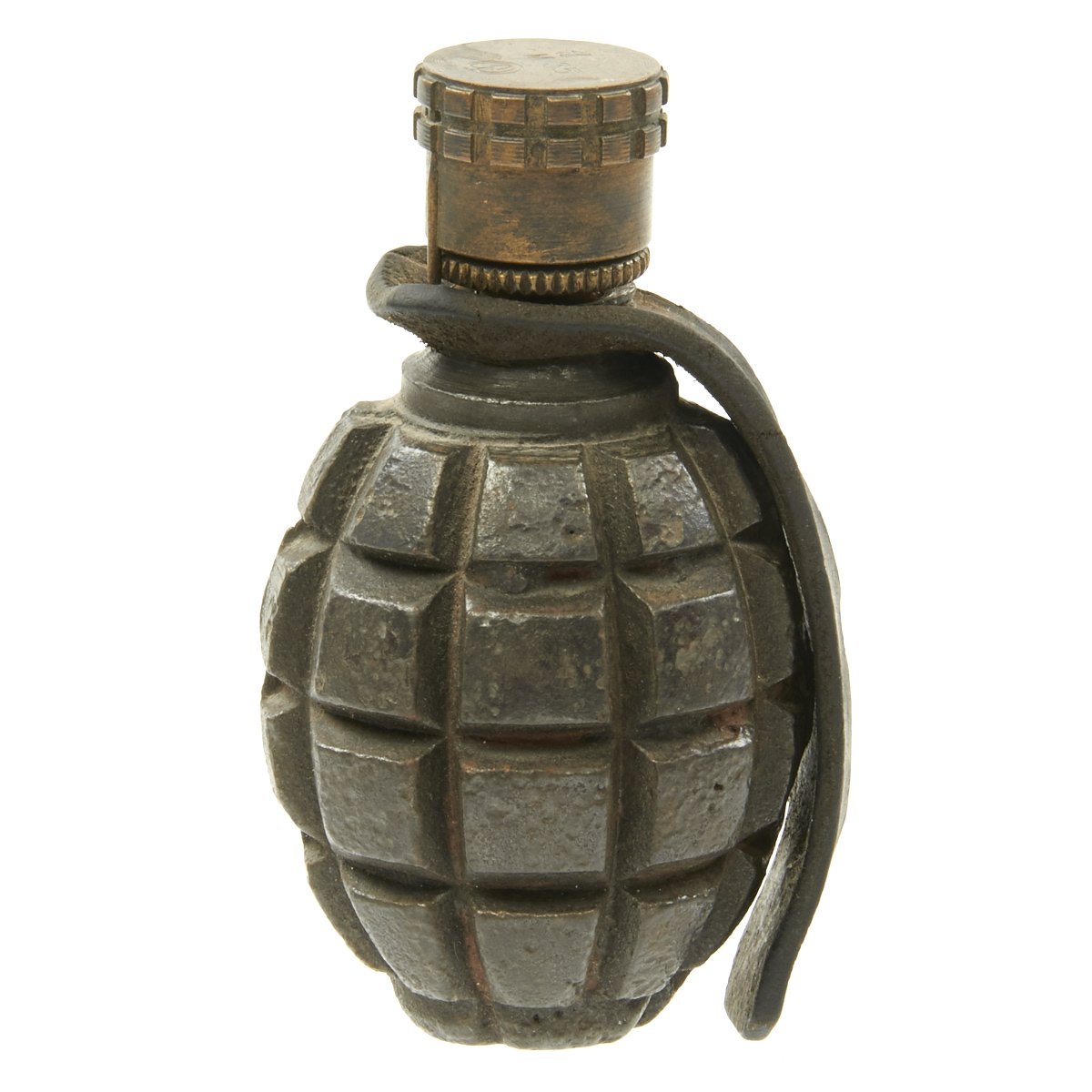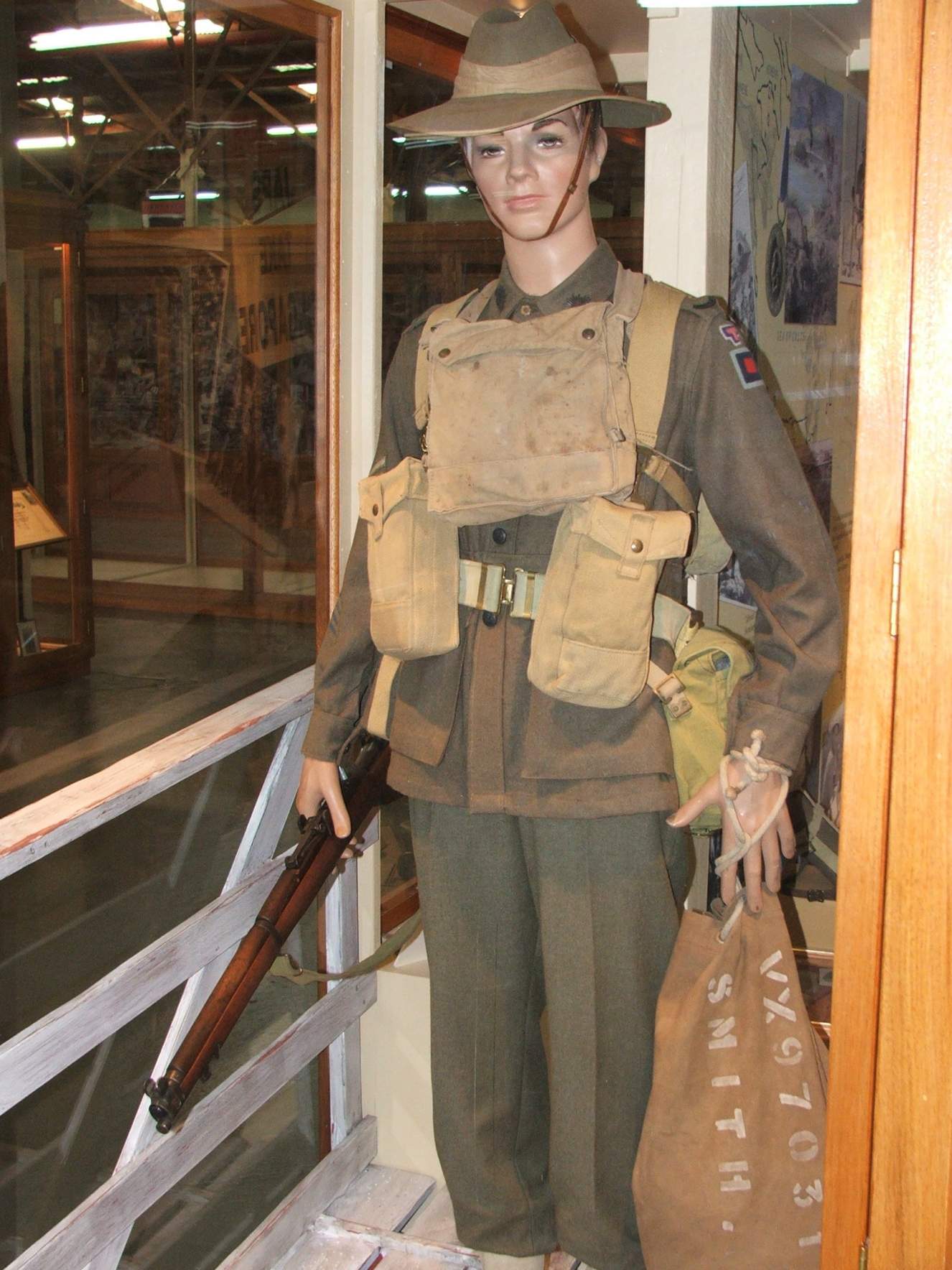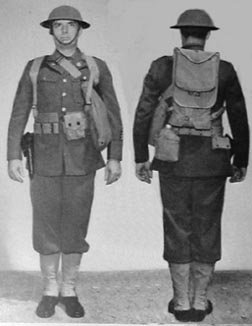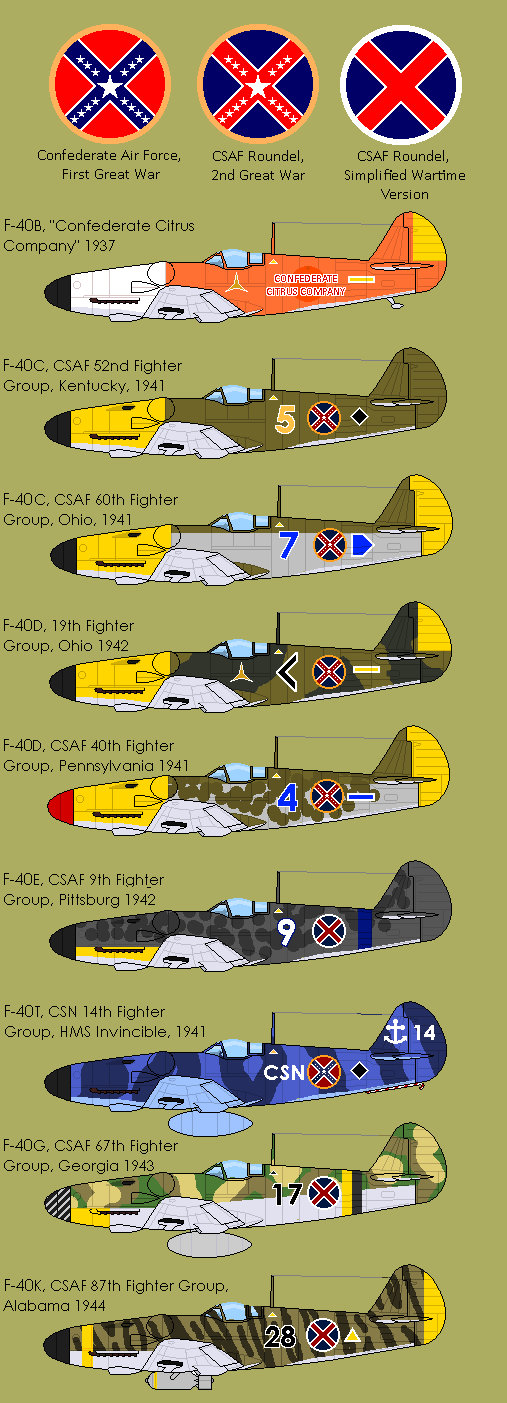Confederate Fleet and Cruiser Submarines

CSS Shark class Fleet Submarine = Same as the OTL Royal Navy T class Submarine
In late 1938, the Admiralty would authorize the construction of 15 subs of a new class for it's Blue Water Submarine Force. Weighing in 1,290 tons surfaced and 1,560 tons submerged and has 6 bow torpedo tubes and 4 external torpedo tubes. The first boat in the class, the CSS Shark, was launched in April of 1939 and commissioned in August of that year. The last boat of the first group, the CSS Sailfish, would be commissioned into service in January of 1940. The following month, the Admiralty would order 20 more boat in the class, which would be the 2nd group of the class. This was known as the Tarpon group after the first boat of it, the CSS Tarpon. Throughout the war, these ships would prove to be a problem to the Union Navy, either launching torpedo attacks on Union ships and also laying mines in Union controlled waters. Of all of the 35 boats constructed, only the CSS Shark, Dolphin, and Marlin survived the war, with the Shark and Marlin being transferred to the Texan Navy and the Dolphin being retained by the Union Navy as a training submarine until 1951, when it was sold to ship breakers in Baltimore.

CSS Barracuda class Large Fleet Submarine
Throughout the 1920s, the Confederate Admiralty was throwing around ideas for large fleet submarines, which were submarines that could operation deep in the Atlantic for long periods. In 1929, the final design, Project 227, was made, with six forward torpedo tubes, four rear torpedo tubes, two deck guns and two 37mm AA guns. In all, two boats would be ordered and laid down in December of 1929 and the first boat, the CSS Barracuda, was commissioned in June of 1931, followed by the CSS Wahoo in the following month. By the beginning of the 2nd Great War, the two submarines would operating off the coast of New Jersey and New York, laying sea mines and attacking enemy shipping. However, the Wahoo would be lost off the coast of New Jersey on September 11th, 1941 to Union Coastal Patrol Aircraft, which attacked it and sunk it with depth charges, kill all aboard. A month later, the CSS Barracuda would sink the Union tanker, SS Lake Huron and cargo ships, SS Oregon City and SS Harvard off the coast of Long Island and the Armed Trawler, USS Pawnee. In March of 1942, while operating off the coast of the Maine, would strike a naval mine and sink with all hands.

CSS Croaker class Large Fleet Submarine
Following the commissioning of the Barracuda class of large fleet submarines, the Admiralty would order a modified version of the class to be designed. In 1934, the design, Project 1134a, would be ordered with 6 boats. In May of 1936, the CSS Croaker was launched and was commissioned in October of 1936, which was followed by the CSS Angelfish, Salmon, Flounder, and Trumpetfish would enter service, with the final planned member of the class, the CSS Minnow being completed to a modified design. Throughout the war, the class was used in many roles, from attacking enemy ships, mine laying, and even being used for supplying Confederate Forces in Haiti. The CSS Salmon would notably sink the Union submarine USS Gato with her deck guns in a duel with that sub on July 16th, 1942 in the Atlantic near Bermuda. The Flounder on September 17th, 1943 would attempt to torpedo the Union carrier USS Enterprise, but was sunk by it's destroyer escort, the USS Samuel B. Roberts. At war's end, only the CSS Salmon would survive when it was surrendered at the main Confederate submarine base at Fort Lauderdale Florida. It was eventually sold for scrap metal in Miami in April of 1945. During the war, the CSS Salmon and Trumpetfish would be used to carry Confederate Frogmen in August of 1942 to make attacks on docked Union ships at port.

CSS Minnow, Aircraft Submarine
During it's construction, the Admiralty would order that the CSS Minnow be built to a modified design, which was to be an aircraft carrying submarine with a stowage for an airplane and a ramp for the plane to take off from. After it's commissioning in 1937, the CSS Minnow would be used to test the concept of an aircraft carrier submarine, in which they would prove successful. However, the CSS Minnow would remain the only aircraft submarine in Confederate Service as Featherson prevented the construction of more aircraft carrying subs. During the war, the Minnow would use her Hughes V-36 Seal scout plane to scout out enemy convoys for Confederate submarines. In August of 1943, the Minnow would be ordered to converted into a cargo submarine with her Seal scout plane and the launch ramp be removed. Until October of that year, the Minnow would be used to transport crucial supplies to Confederate Forces in Haiti. Then on October 14th, while running on the surface near Cuba and returning to it's home base of Fort Lauderdale, the Minnow was attacked by Union Navy fighter bombers and was sunk, with ten of her crew members being rescued by the frigate CSS McCoy. The Minnow's V-36 Seal was eventually found by the Union Army in a warehouse in Florida in September of 1944, and is now preserved at the Museum of the United States Air Force in Dayton, Ohio.

CSS Catfish class Fleet Submarine
In the early 1930s, the Confederate Admiralty would design a new class of fleet submarines for it's fleet, which consisted of four front and two rear torpedo tubes, and a single deck gun. The boats would be constructed from 1931 to 1934 in two batches of 25 each. Two boats would be lost before the war, with the CSS Guppy being lost due to mysterious circumstances off of Cuba in 1939 and the CSS Porcupinefish being declared a constructive loss following an explosion in the forward torpedo room in May of 1937 in Guantanamo, Cuba. Following an extensive investigation, it was determined that the explosion was used by human error. Throughout the war, the class would serve in the roles of both ship hunting and as mine layers. The most famous member of the class, the CSS Drum under the Skipper John Reynolds, sank 200,000 tons of Union shipping, which the CSS Drum proved be the top scoring Confederate sub of the war. It was ultimately captured at Fort Lauderdale in 1944 and was sunk as target practice by the Union Navy in 1946. In all, two more of the class, the CSS Ling and CSS Cobia would also survive the war, and were both transferred to the Texan Navy where they served until 1957, when they were scrapped in Brownsville. The Confederacy would also built 10 more ships of the class for the Mexican Navy, which served until the late 1950s.

CSS Bonefish class Submarine
After the First Great War, the Confederacy would be banned from owning submarines for it's navy. However in the early 1920s, the Confederate Admiralty would begin considering on getting new submarines for it's navy. The Confederacy would also construct some submarines for the navies of China, Siam, and Venezuela under a Front Company in Portugal. The ultimate design chosen was pretty much identical to the class built for the Royal Siamese Navy, with four forward and one rear torpedo tubes and a single deck gun. Four of these new boats for the CSN would be built in Portugal and four more built at the Mobile Naval Arsenal. While under construction, the cash strapped Confederate Navy would sell two of the submarines to the Greek Navy, which would serve in the Royal Hellenic Navy until the late 1940s. The first boat, CSS Bonefish would be launched at Lisbon in 1927 and be commissioned in 1928, and the remainder of the class would be completed in 1928. The class serve the frontline Confederate Submarine Fleet until 1938 when they were re delegated to service as training submarines. In the training role, the submarines would operate out of Mobile in the Gulf of Mexico until 1944 when they were evacuated to Tampa when the Union Army approached the city. Following the war, four of the submarines would be scrapped at Mobile while the rest were disposed as target practice by the Union Navy in the Atlantic in 1945.

CSS Spearfish class Submarine
The Confederate Admiralty would order 30 submarines in a new class as part of their Modernization Plan of 1936. These boats were to be equipped with six forward and two aft torpedo tubes and a single deck gun on the conning tower. The first 10 boats would be laid down at the United Steel Shipyard in New Orleans in the spring of 1937 while more would be laid down at the Mobile Naval Arsenal and the Charleston Electric Boat Company shipyard in Charleston in the summer of that year. The first boat, CSS Spearfish, would be launched on August 9th, 1937 and would be commissioned in December of that year. The final boats would be commissioned into the fleet in the Spring of 1938. In July of 1937, the Admiralty would order 25 more boats of the class, which the first boats would be launched in May of 1938 and be commissioned later that year. Like with all Confederate Fleet Submarines during the war, the Spearfish class would be used for many different uses and saw plenty of service. In 1938, the Mobile Shipyard would constructed 10 of the boats for the Mexican Navy and 10 for the Siamese Navy, and in late 1940, Venezuela, Chile, Spain, and Persia each would also order 10 of these boats from the Confederacy, but when war began, would be impressed into the Confederate Navy. During the war, the class would be the only Oceangoing Submarine to be built beyond August 2nd, 1942 as these boats were the cheapest and easiest to construct, as a result, 59 of the boats would be constructed and commissioned as the D-2 subclass. A total of 144 of the boats would be used by the Confederacy during the 2nd Great War, which many of the survivors would be used by the Union Navy as training vessels all the way up to the early 1960s. The CSS Lionfish would be notable as to being destroyed by the Union sub USS Sturgeon near the coast of Long Island in November of 1943 in the only instance of underwater sub on sub battle in Naval History. Today only two of them survive to this day, one in Siam and one in Jacksonville Florida, the ex CSS D-31.

CSS Tyrannosaurus, Cruiser Submarine = OTL Surcouf Cruiser Submarine
In the early 1930s, the Confederate Admiralty would have a fascination of constructing so-called "Underwater Cruisers" and "Underwater Battleships." So much so, that they would order from the United Steel Shipyard in 1932 a large sized submarine of the Project 1446 specification. That specification called for the submarine to be armed with two 8' guns, 6 forward and four rear torpedo tubes, and to also feature a hanger for an airplane. The Admiralty decided that the naming convention for Cruiser Submarines to be of Dinosaur names, thus breaking from the tradition of naming subs after fish. When launched in 1934, the boat would be named the CSS Tyrannosaurus and was commissioned in March of 1936. The scout plane was originally a modified Talbot T-31 scout plane, but in 1937, would be replaced by a Hughes V-36 Seal scout plane. Despite seeing significant use throughout the war and sinking 39 Union ships, only two of them would be sunk by the CSS Tyrannosaurus' guns, they were merchant ship SS Columbia off Long Island in 1942 and the minesweeper USS Tornado in the Bahamas in 1941. The Tyrannosaurus would ultimately be surrendered at Tampa Bay in 1944, and was thoroughly examined by the USN until was sold for scrap in 1947.

CSS Spinosaurus class Cruiser Submarine
After the commissioning of the CSS Tyrannosaurus, the Admiralty would begin design studies for a potential follow on design. The final design would consist of six forward and four rear torpedo tubes, but it's most powerful weapons were to be dual mount 8' gun turrets. The first boat was laid down on September 7th, 1938 and five more would be laid down afterwards. In April of 1941, the CSS Spinosaurus would be launched, which was followed by the CSS Triceratops, Brontosaurus, and Allosaurus being launched, while two others had their construction slowed down and finally suspended in August of 1942. Only the CSS Spinosaurus would commissioned as it was originally designed while it's sisterships would be modified into Supply Submarines during their construction (though the Triceratops and Allosaurus were completed. During the Spinosaurus' career, the boat only sank three enemy vessels, two merchant ships and one destroyer escort, the USS Mueller, with one of the merchant ships being sunk by it's 8' guns. Then in April of 1943, the Spinosaurus was re-designated as a gunnery training vessel. During the fight for the island of Haiti, both the Triceratops and the Allosaurus were used to re-supply Confederate forces on the island, and the Triceratops would be sunk by the Union destroyer USS Edson on August 26th, 1943. The Allosaurus was also lost when it was destroyed in a Union bombing raid of the Submarine Base at Fort Lauderdale on March 28th, 1944 while being restocked to resupply Confederate forces in Cuba. The CSS Spinosaurus would be scuttled by her crew at the Port of Houston on April 30th, 1944 as Union troops and Texan rebels approached the city, and was raised in 1945 and subsequently broken up. The two incomplete hulls would be broken up on there slipways after the war in Mobile. The incomplete CSS Brontosaurus would also be broken up after being inspected by the Union Navy in 1947 at Mobile Alabama.
CSS Shark class Fleet Submarine = Same as the OTL Royal Navy T class Submarine
In late 1938, the Admiralty would authorize the construction of 15 subs of a new class for it's Blue Water Submarine Force. Weighing in 1,290 tons surfaced and 1,560 tons submerged and has 6 bow torpedo tubes and 4 external torpedo tubes. The first boat in the class, the CSS Shark, was launched in April of 1939 and commissioned in August of that year. The last boat of the first group, the CSS Sailfish, would be commissioned into service in January of 1940. The following month, the Admiralty would order 20 more boat in the class, which would be the 2nd group of the class. This was known as the Tarpon group after the first boat of it, the CSS Tarpon. Throughout the war, these ships would prove to be a problem to the Union Navy, either launching torpedo attacks on Union ships and also laying mines in Union controlled waters. Of all of the 35 boats constructed, only the CSS Shark, Dolphin, and Marlin survived the war, with the Shark and Marlin being transferred to the Texan Navy and the Dolphin being retained by the Union Navy as a training submarine until 1951, when it was sold to ship breakers in Baltimore.
CSS Barracuda class Large Fleet Submarine
Throughout the 1920s, the Confederate Admiralty was throwing around ideas for large fleet submarines, which were submarines that could operation deep in the Atlantic for long periods. In 1929, the final design, Project 227, was made, with six forward torpedo tubes, four rear torpedo tubes, two deck guns and two 37mm AA guns. In all, two boats would be ordered and laid down in December of 1929 and the first boat, the CSS Barracuda, was commissioned in June of 1931, followed by the CSS Wahoo in the following month. By the beginning of the 2nd Great War, the two submarines would operating off the coast of New Jersey and New York, laying sea mines and attacking enemy shipping. However, the Wahoo would be lost off the coast of New Jersey on September 11th, 1941 to Union Coastal Patrol Aircraft, which attacked it and sunk it with depth charges, kill all aboard. A month later, the CSS Barracuda would sink the Union tanker, SS Lake Huron and cargo ships, SS Oregon City and SS Harvard off the coast of Long Island and the Armed Trawler, USS Pawnee. In March of 1942, while operating off the coast of the Maine, would strike a naval mine and sink with all hands.
CSS Croaker class Large Fleet Submarine
Following the commissioning of the Barracuda class of large fleet submarines, the Admiralty would order a modified version of the class to be designed. In 1934, the design, Project 1134a, would be ordered with 6 boats. In May of 1936, the CSS Croaker was launched and was commissioned in October of 1936, which was followed by the CSS Angelfish, Salmon, Flounder, and Trumpetfish would enter service, with the final planned member of the class, the CSS Minnow being completed to a modified design. Throughout the war, the class was used in many roles, from attacking enemy ships, mine laying, and even being used for supplying Confederate Forces in Haiti. The CSS Salmon would notably sink the Union submarine USS Gato with her deck guns in a duel with that sub on July 16th, 1942 in the Atlantic near Bermuda. The Flounder on September 17th, 1943 would attempt to torpedo the Union carrier USS Enterprise, but was sunk by it's destroyer escort, the USS Samuel B. Roberts. At war's end, only the CSS Salmon would survive when it was surrendered at the main Confederate submarine base at Fort Lauderdale Florida. It was eventually sold for scrap metal in Miami in April of 1945. During the war, the CSS Salmon and Trumpetfish would be used to carry Confederate Frogmen in August of 1942 to make attacks on docked Union ships at port.
CSS Minnow, Aircraft Submarine
During it's construction, the Admiralty would order that the CSS Minnow be built to a modified design, which was to be an aircraft carrying submarine with a stowage for an airplane and a ramp for the plane to take off from. After it's commissioning in 1937, the CSS Minnow would be used to test the concept of an aircraft carrier submarine, in which they would prove successful. However, the CSS Minnow would remain the only aircraft submarine in Confederate Service as Featherson prevented the construction of more aircraft carrying subs. During the war, the Minnow would use her Hughes V-36 Seal scout plane to scout out enemy convoys for Confederate submarines. In August of 1943, the Minnow would be ordered to converted into a cargo submarine with her Seal scout plane and the launch ramp be removed. Until October of that year, the Minnow would be used to transport crucial supplies to Confederate Forces in Haiti. Then on October 14th, while running on the surface near Cuba and returning to it's home base of Fort Lauderdale, the Minnow was attacked by Union Navy fighter bombers and was sunk, with ten of her crew members being rescued by the frigate CSS McCoy. The Minnow's V-36 Seal was eventually found by the Union Army in a warehouse in Florida in September of 1944, and is now preserved at the Museum of the United States Air Force in Dayton, Ohio.
CSS Catfish class Fleet Submarine
In the early 1930s, the Confederate Admiralty would design a new class of fleet submarines for it's fleet, which consisted of four front and two rear torpedo tubes, and a single deck gun. The boats would be constructed from 1931 to 1934 in two batches of 25 each. Two boats would be lost before the war, with the CSS Guppy being lost due to mysterious circumstances off of Cuba in 1939 and the CSS Porcupinefish being declared a constructive loss following an explosion in the forward torpedo room in May of 1937 in Guantanamo, Cuba. Following an extensive investigation, it was determined that the explosion was used by human error. Throughout the war, the class would serve in the roles of both ship hunting and as mine layers. The most famous member of the class, the CSS Drum under the Skipper John Reynolds, sank 200,000 tons of Union shipping, which the CSS Drum proved be the top scoring Confederate sub of the war. It was ultimately captured at Fort Lauderdale in 1944 and was sunk as target practice by the Union Navy in 1946. In all, two more of the class, the CSS Ling and CSS Cobia would also survive the war, and were both transferred to the Texan Navy where they served until 1957, when they were scrapped in Brownsville. The Confederacy would also built 10 more ships of the class for the Mexican Navy, which served until the late 1950s.
CSS Bonefish class Submarine
After the First Great War, the Confederacy would be banned from owning submarines for it's navy. However in the early 1920s, the Confederate Admiralty would begin considering on getting new submarines for it's navy. The Confederacy would also construct some submarines for the navies of China, Siam, and Venezuela under a Front Company in Portugal. The ultimate design chosen was pretty much identical to the class built for the Royal Siamese Navy, with four forward and one rear torpedo tubes and a single deck gun. Four of these new boats for the CSN would be built in Portugal and four more built at the Mobile Naval Arsenal. While under construction, the cash strapped Confederate Navy would sell two of the submarines to the Greek Navy, which would serve in the Royal Hellenic Navy until the late 1940s. The first boat, CSS Bonefish would be launched at Lisbon in 1927 and be commissioned in 1928, and the remainder of the class would be completed in 1928. The class serve the frontline Confederate Submarine Fleet until 1938 when they were re delegated to service as training submarines. In the training role, the submarines would operate out of Mobile in the Gulf of Mexico until 1944 when they were evacuated to Tampa when the Union Army approached the city. Following the war, four of the submarines would be scrapped at Mobile while the rest were disposed as target practice by the Union Navy in the Atlantic in 1945.
CSS Spearfish class Submarine
The Confederate Admiralty would order 30 submarines in a new class as part of their Modernization Plan of 1936. These boats were to be equipped with six forward and two aft torpedo tubes and a single deck gun on the conning tower. The first 10 boats would be laid down at the United Steel Shipyard in New Orleans in the spring of 1937 while more would be laid down at the Mobile Naval Arsenal and the Charleston Electric Boat Company shipyard in Charleston in the summer of that year. The first boat, CSS Spearfish, would be launched on August 9th, 1937 and would be commissioned in December of that year. The final boats would be commissioned into the fleet in the Spring of 1938. In July of 1937, the Admiralty would order 25 more boats of the class, which the first boats would be launched in May of 1938 and be commissioned later that year. Like with all Confederate Fleet Submarines during the war, the Spearfish class would be used for many different uses and saw plenty of service. In 1938, the Mobile Shipyard would constructed 10 of the boats for the Mexican Navy and 10 for the Siamese Navy, and in late 1940, Venezuela, Chile, Spain, and Persia each would also order 10 of these boats from the Confederacy, but when war began, would be impressed into the Confederate Navy. During the war, the class would be the only Oceangoing Submarine to be built beyond August 2nd, 1942 as these boats were the cheapest and easiest to construct, as a result, 59 of the boats would be constructed and commissioned as the D-2 subclass. A total of 144 of the boats would be used by the Confederacy during the 2nd Great War, which many of the survivors would be used by the Union Navy as training vessels all the way up to the early 1960s. The CSS Lionfish would be notable as to being destroyed by the Union sub USS Sturgeon near the coast of Long Island in November of 1943 in the only instance of underwater sub on sub battle in Naval History. Today only two of them survive to this day, one in Siam and one in Jacksonville Florida, the ex CSS D-31.
CSS Tyrannosaurus, Cruiser Submarine = OTL Surcouf Cruiser Submarine
In the early 1930s, the Confederate Admiralty would have a fascination of constructing so-called "Underwater Cruisers" and "Underwater Battleships." So much so, that they would order from the United Steel Shipyard in 1932 a large sized submarine of the Project 1446 specification. That specification called for the submarine to be armed with two 8' guns, 6 forward and four rear torpedo tubes, and to also feature a hanger for an airplane. The Admiralty decided that the naming convention for Cruiser Submarines to be of Dinosaur names, thus breaking from the tradition of naming subs after fish. When launched in 1934, the boat would be named the CSS Tyrannosaurus and was commissioned in March of 1936. The scout plane was originally a modified Talbot T-31 scout plane, but in 1937, would be replaced by a Hughes V-36 Seal scout plane. Despite seeing significant use throughout the war and sinking 39 Union ships, only two of them would be sunk by the CSS Tyrannosaurus' guns, they were merchant ship SS Columbia off Long Island in 1942 and the minesweeper USS Tornado in the Bahamas in 1941. The Tyrannosaurus would ultimately be surrendered at Tampa Bay in 1944, and was thoroughly examined by the USN until was sold for scrap in 1947.
CSS Spinosaurus class Cruiser Submarine
After the commissioning of the CSS Tyrannosaurus, the Admiralty would begin design studies for a potential follow on design. The final design would consist of six forward and four rear torpedo tubes, but it's most powerful weapons were to be dual mount 8' gun turrets. The first boat was laid down on September 7th, 1938 and five more would be laid down afterwards. In April of 1941, the CSS Spinosaurus would be launched, which was followed by the CSS Triceratops, Brontosaurus, and Allosaurus being launched, while two others had their construction slowed down and finally suspended in August of 1942. Only the CSS Spinosaurus would commissioned as it was originally designed while it's sisterships would be modified into Supply Submarines during their construction (though the Triceratops and Allosaurus were completed. During the Spinosaurus' career, the boat only sank three enemy vessels, two merchant ships and one destroyer escort, the USS Mueller, with one of the merchant ships being sunk by it's 8' guns. Then in April of 1943, the Spinosaurus was re-designated as a gunnery training vessel. During the fight for the island of Haiti, both the Triceratops and the Allosaurus were used to re-supply Confederate forces on the island, and the Triceratops would be sunk by the Union destroyer USS Edson on August 26th, 1943. The Allosaurus was also lost when it was destroyed in a Union bombing raid of the Submarine Base at Fort Lauderdale on March 28th, 1944 while being restocked to resupply Confederate forces in Cuba. The CSS Spinosaurus would be scuttled by her crew at the Port of Houston on April 30th, 1944 as Union troops and Texan rebels approached the city, and was raised in 1945 and subsequently broken up. The two incomplete hulls would be broken up on there slipways after the war in Mobile. The incomplete CSS Brontosaurus would also be broken up after being inspected by the Union Navy in 1947 at Mobile Alabama.
Last edited:
